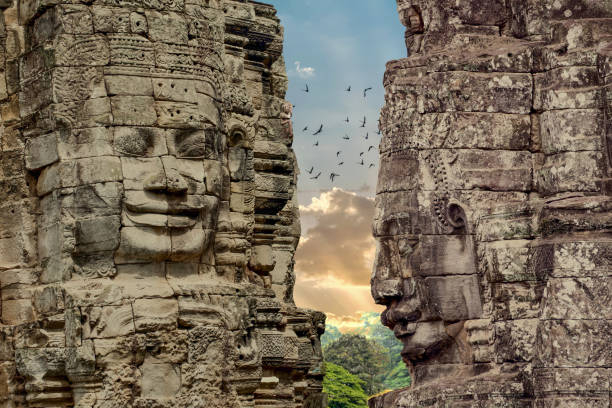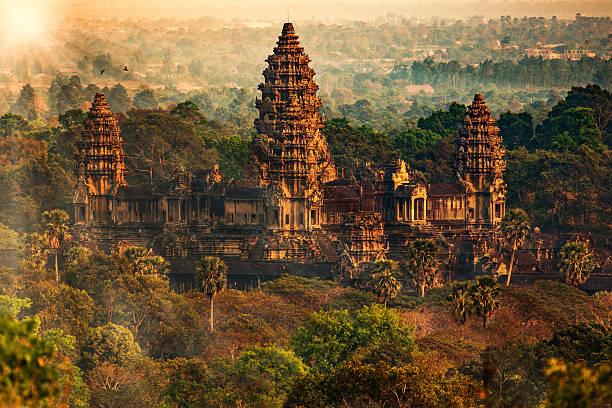Angkor
From the ninth until the fourteenth century, Angkor was the capital of the Khmer Empire. As a result, it is rich in historical riches, making it one of Southeast Asia's most important archaeological sites.
A thousand temple ruins can be discovered spread throughout farmlands and rice fields. These include the world's biggest single religious building, Angkor Wat, the Bayon temple at Angkor Thom with its myriad of gigantic stone faces, and Ta Prohm, a Buddhist temple ruin entangled with tall trees. Many of the temples at Angkor have been reconstructed, making the massive complex one of the marvels of the ancient world while also providing an excellent glimpse into Khmer history.
Among these is the well-known Angkor Wat temple, the world's biggest single religious edifice. The sunrise from behind the temple's distinctive towers is an amazing spectacle that is well worth the early morning wake-up call. However, don't expect to have the temple all to yourself because this is peak season when crowds of other early risers travel here to catch this wonderful moment.
Angkor saw significant religious shifts during its lengthy history, changing from Hinduism to Buddhism multiple times. It has become a symbol of Cambodia, featuring on its national flag, and is one of Southeast Asia's most popular tourist destinations.















